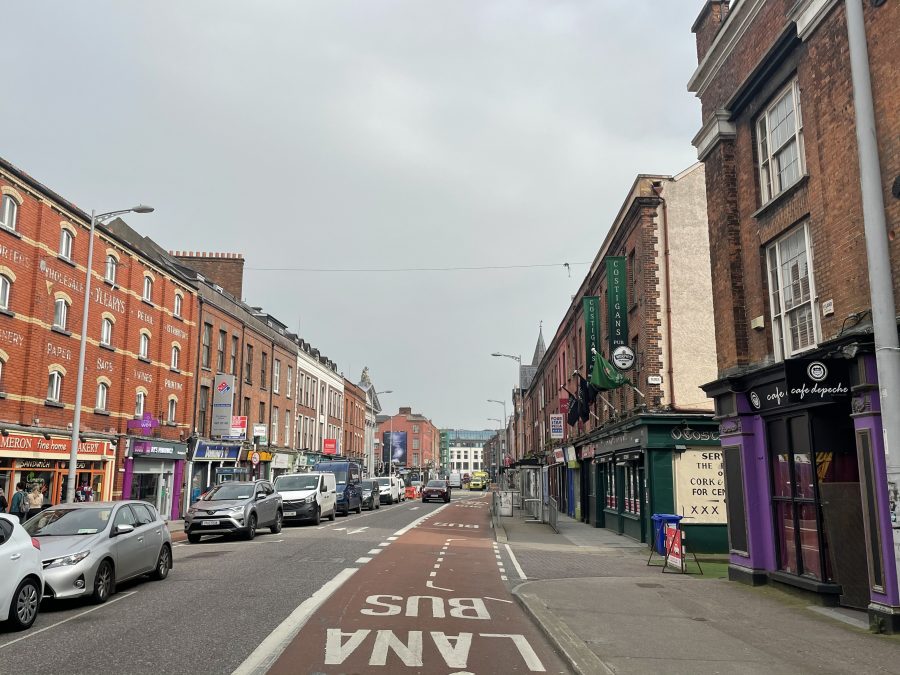
Kieran’s Our City, Our Town Article,
Cork Independent, 15 April 2021
Journeys to a Truce: The Washington Street Ambush
Patrick Murray was Officer in Command of C-Company of the 1st Battalion, Cork No.1 IRA Brigade. In his witness statement for the Bureau of Military History (WS1584), he describes the Spring activity of an active IRA service unit in the city centre.
Patrick outlines that when the active service unit began, it comprised six members from each of the two battalions in the city. The men on the unit were: Danny Healy, Stephen McSwiney, Jim Barrett, Liam O’Callaghan, Seán Twomey and Patrick Murray from the 1st Battalion; and Florrie O’Donoghue, Jim Counihan, Ned Fitzgibbon, George Burke, Jim Fitzgerald, Peter Donovan and one other from the 2nd Battalion. Seán Twomey was put in charge.
There was a special space/ office in the city dealing with the unit’s intelligence and communications. This office was under the control of George Buckley. Only two or three selected couriers were allowed to know where the office was, for fear of anyone being followed into it.
Of the first few weeks that the active service unit was in existence, Patrick notes: “We were actively engaged watching the movements of military and police. The members of the active service unit took turns in taking up positions along routes which were supposed to be taken by the police and military, but as they did not take any particular route with any regularity, it was often found that they would leave a street just when the military or police came into it”.
The unit’s first ambush occurred on 12 April 1921, just after 10am, when bombs were thrown into a lorry in Washington Street at the junction with Little Anne Street. The bombs failed to explode, and the military returned the fire wounding some civilians. The failure of bombs to explode became a serious problem in the city, as it was realised that, if a bomb did not go off, civilians and the Volunteers themselves would suffer heavy casualties through the retaliation of gunfire. Special men connected with the unit were allocated to the work of inspecting all bombs which were to be used in the city.
Michael O’Donoghue, engineer officer with the 2nd Battalion in his witness statement (WS1741) notes that he was present at the Washington Street ambush describes in his witness statement: “My three companions and myself were armed with revolvers. Our instructions were simple – to cover the retreat of a bombing party who were waiting to attack a military patrolling tender, which passed that way fairly regularly in the morning”.
After the ambush, Michael recalls looking east towards Broad Lane church or the then St Francis Church. “I saw one of our bombers limping along slowly and heavily holding his right side and half supported, half dragged along by a companion. Then, as if from nowhere, a side-car appeared and from it jumped down another of the attacking party. The wounded man is then helped up to a seat on the car, his companion sitting beside him and holding him. The jarvey sat on the opposite side with the other Volunteer behind him. The driver whips up his horse and off they trot in the direction of the Mercy Hospital”.
An official and stark proclamation was published in the Cork Examiner announcing that the competent military authority (Major General Strickland) had ordered the destruction of two large resident business premises near the Courthouse because they had been places where as the announcement noted “rebels and other evilly-disposed persons had consorted to levy war against His Majesty, King George V”.
Michael describes that one of the premises was Macari’s Café, a great resort of College students, where ice cream, minerals, fish and chips, peas and various other choice delicacies in fruit, fish and flesh. Macari himself, his wife and teen-age family were Italians who had settled in Cork pre 1914. It was a popular place for Cork youths especially students of all types, and IRA men were in and out casually every day and at, all times. The British wanted to punish Macari for not reporting to them the “comings and goings” of his clientele.
The other house officially condemned to destruction was Murphy’s public house and provision store round the corner of Messrs Dwyer’s stores near Clarke’s Bridge. The Murphys were a prominent Republican family from the Kinsale area of West Cork.
Michael outlines that the British military cordoned off Washington Street between the Courthouse and Wood Street. Macari’s and Murphy’s were entered by armed soldiers who ordered the occupants outside. Macari’s was blown up first. A demolition squad in khaki entered and set some explosives apparently on top floor. They withdrew to the street where they took cover at a safe distance. There then was a series of explosions and the roof was blown out, sending showers of slates and pieces of wood and masonry flying into the air. When the shower of smoke and dust had subsided the demolition squad again entered this time to complete the job by laying explosive charges on the ground floor.
Michael continues his detail: “Out again with them and back to the safety of the cordon. This time three or four tremendous explosions rocked the interior, completely wrecking everything within. Then the military repeated this programme of destruction in like mariner at Murphy’s. Not a solitary item of furniture or goods were permitted to be taken from either house and both buildings were utterly and completely wrecked in this brutal official reprisal”.
Have a story of relative to tell involved with the War of Independence in Cork, get in touch with Kieran at mccarthy_kieran@yahoo.com
Captions:
1095a. Present day site of Washington Street ambush (12 April 1921) at the intersection with Little Anne Street, (picture: Kieran McCarthy).
1095a. Present day site of Washington Street ambush (12 April 1921) at the intersection with Little Anne Street, (picture: Kieran McCarthy).
